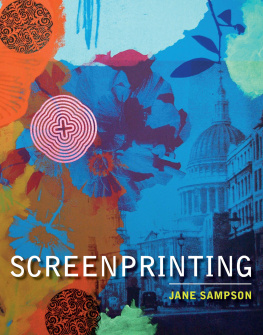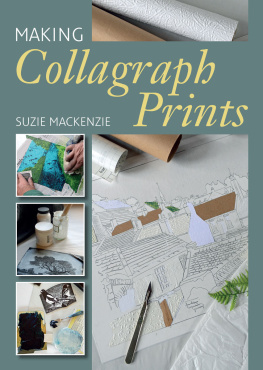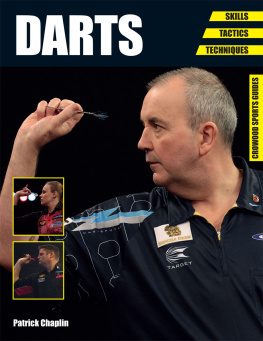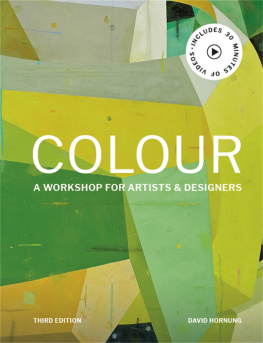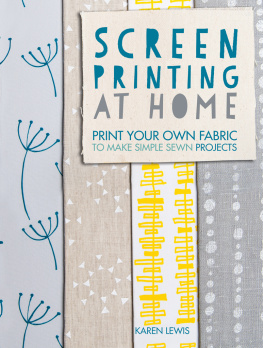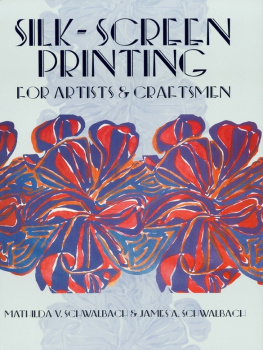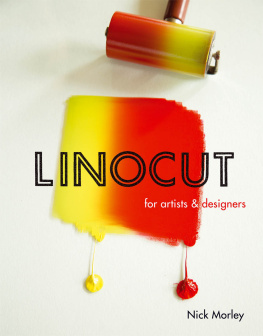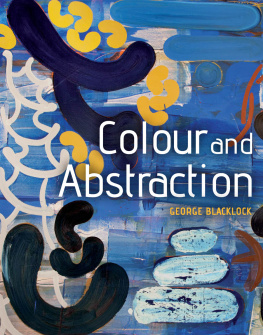SCREENPRINTING

SCREENPRINTING
JANE SAMPSON

ROBERT HALE
CONTENTS
PREFACE
This is a practical how to do it book written with artists, designers and enthusiastic amateurs in mind. It is based on many years of experience as a professional artist/printmaker with a long track record of exhibiting and also working as a teacher and lecturer in colleges, universities and in my own open-access studio, Inkspot Press.
The book uses an accessible step-by-step approach, with separate chapters illustrating everything from basic paper stencil techniques and simple handmade approaches that do not require sophisticated equipment, to the use of more complex photographic stencils. It also covers making colour separations by hand and on the computer. It aims to enlighten and inspire, giving people the confidence to have a go at this most versatile of print media and to develop their own style.
I would like to thank all of the artists who kindly allowed me to photograph them at work, or contributed their time and imagery to the book. These are: John Parkinson (Parky), Anthony Downey, Frances Quail, Annie Mendelow, Jack Nash, Jodie Tableporter, Rachel Brookes-Read and Anita Bernacka, plus Fox Fisher (who took many of the photographs), all of whom are regulars at Inkspot Press. And last but not least, I would like to thank my partner, the print wizard, Andy from Handprint, who helped with the last two chapters.
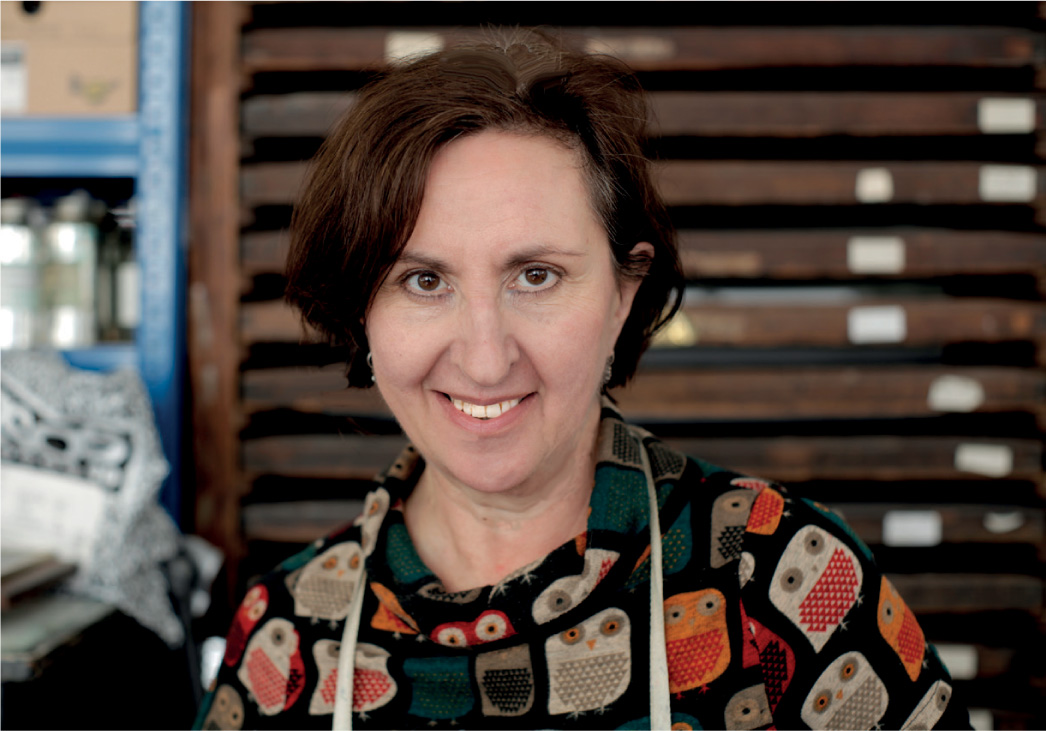
Jane Sampson
Jane Sampson is an award-winning artist/printmaker with a specialist knowledge of screenprinting. She has been printing for over thirty years and has experience in both commercial and artistic environments. She is well known as an enthusiastic and inspiring teacher. She works from her open-access studio, Inkspot Press, in Brighton, as a part-time lecturer at Brighton University and as a short-course tutor at Westdean College (the Edward James Foundation). As a practising artist she exhibits widely, both in the UK and abroad, and her work is held in many private and public collections.
CHAPTER 1
INTRODUCTION
What is screenprinting?
In essence, screenprinting is a sophisticated form of stencilling, in which the stencil is carried on a fabric mesh that is tightly stretched across a frame. The advantage of mounting a stencil on a screen is that the stencil can have its floating parts (like the middle of an o) held in place by the mesh, whereas a traditional stencil would need to have ties or bridges to hold some of its elements in place.
It is also known as silkscreenprinting, because in its infancy as a commercial process at the beginning of the nineteenth century early pioneers used silk bolting cloth as the stretched fabric. Likewise in Europe it is called srigraphie, serigrafica or siebdruck (French, Spanish and German) from the Greek/Latin root seri for silk. Fine Art prints are sometimes known as serigraphs, particularly in America, rather than screenprints, as a way to distinguish these prints from their commercial counterparts.
Nowadays the mesh is not made of silk. It is usually made of specially woven monofilament polyester, although in some applications nylon or stainless-steel meshes are used. Modern meshes are not prone to rotting and stretching with wear like silk and can be reclaimed after use.
The screen frames can either be made of wood or metal (usually steel or aluminium) to which the mesh is firmly glued. The frames have to be strong enough to resist the tension of the tightly stretched fabric without bowing and also must be water-resistant so that they do not warp with constant cleaning and reclaiming. The days are gone when it was sufficient to stretch a screen by hand and staple the fabric to the frame. In the wider world, screenprinting is a high-tech industry with equally high-tech industries creating machinery and supplies to service it.
The stencil image is printed, using a squeegee, by forcing ink or dye through the open areas of the mesh on to the paper or fabric underneath. In the early days, metal blades were used, but as these would eventually tear the silk, they were replaced by rubber blades, which, in turn, would wear down and harden with age. Today, squeegees usually consist of a flexible, very durable, polyurethane blade clamped into a wooden or aluminium handle.
When printing, the empty stencil is first loaded with ink using the squeegee (the flood bar on an automated printing table). This is called the flood stroke. The ink in the screen is then printed down on to the print with another stroke of the squeegee (the pull). Preparation the artwork, stencil making, ink mixing and colour matching forms a huge part of the process and can be time-consuming. The actual printing is a relatively fast procedure.
The stencil itself can be made in many different ways, both low- and high-tech. Its main function is to block the mesh in the non-printing areas and prevent the printing ink from penetrating through on to the substrate below. It has to resist the action of the squeegee blade and the printing ink without breaking down.
At the low-tech end, simple temporary stencils can be made from thin cut paper, or can be painted directly on to the mesh with fluid, which, when dry, will be ink-resistant (screen filler or screen block). Some stencils are cut on a backing such as Profilm and adhered to the mesh with solvent or water. Others make use of a resist technique rather like batik.
All of the above hands-on, direct methods are still in use, particularly amongst artists, designers and hobbyists who want to make their own prints. It is possible to work using these methods without having access to complicated or expensive equipment or even a workshop. They are still popular because they can produce a particular aesthetic, or look, that is hard to create in any other way, even on a computer. There is a physicality about screenprints that is hard to fake with an inkjet printer.
These direct methods also mean that the artist incorporates his or her hand in the making process and can stay true to the immediacy of drawing, cutting or painting without any intervening mechanics. As such, screenprints are as satisfying to do, as they are absorbing and creative. While running my open-access print workshop and when teaching, I am constantly being told, particularly by graphic designers and Illustrators, just how much they enjoy getting their hands dirty after long hours sitting at a computer screen. Also, the satisfaction of creating a product from start to finish simply cannot be matched.
However, by far the most reliable, accurate and widely used method of stencil making is photographic. Photo stencils are exposed on to the screen from a positive, using ultraviolet light. This allows an extraordinary array of textures, marks and imagery, whether hand-drawn or photographic, photocopied or computer-generated, to be used. This opens up a whole world of possibilities when it comes to image-making. Artists and designers have exploited this to great effect since the 1950s, although the technology to make photo stencils has actually been around since the turn of the nineteenth century.
A screen-printed image (graphic or Fine Art) is built up in layers of colour, one colour at a time. So, for example, if you were printing twenty two-colour prints on to paper using blue and black, you would first print all twenty sheets using the blue stencil. Then, when they were dry, you would print all twenty again using the black stencil. The black would have to print in the right place, registering with the blue, on every print, for the print run to work out successfully. To achieve this, a system of registration has to be used in multilayered, multicoloured designs.

